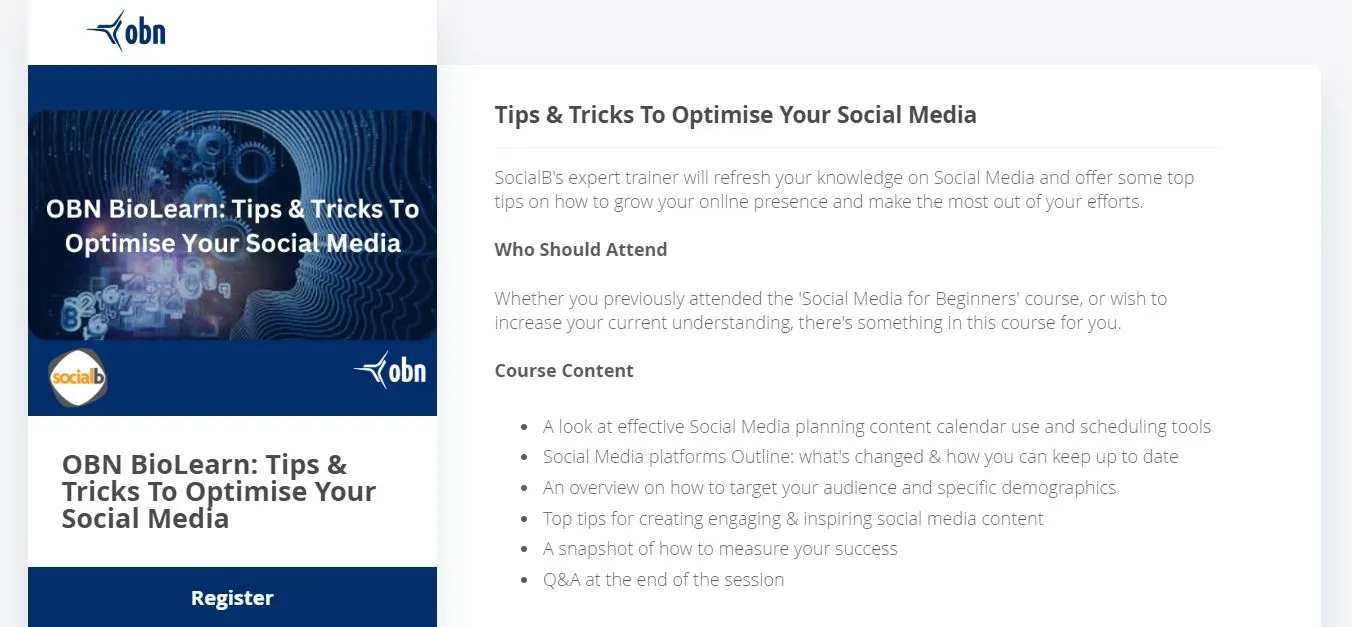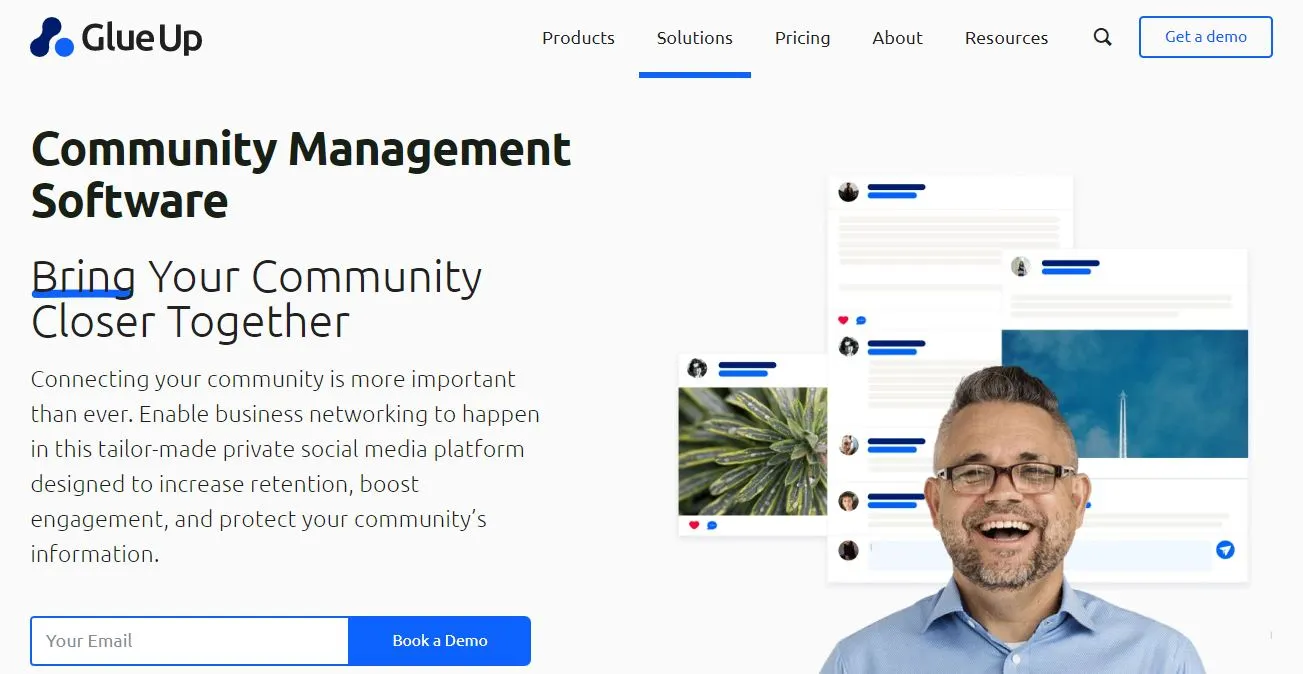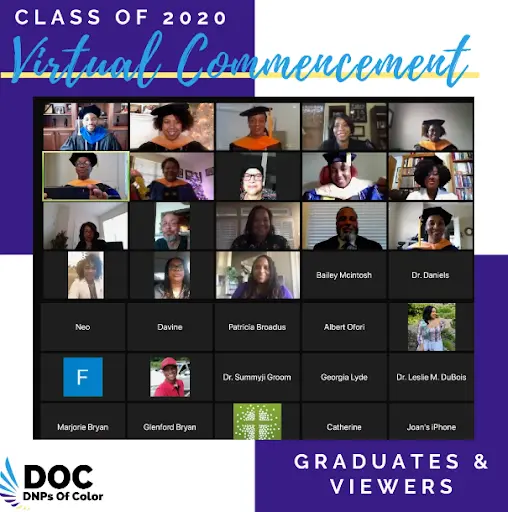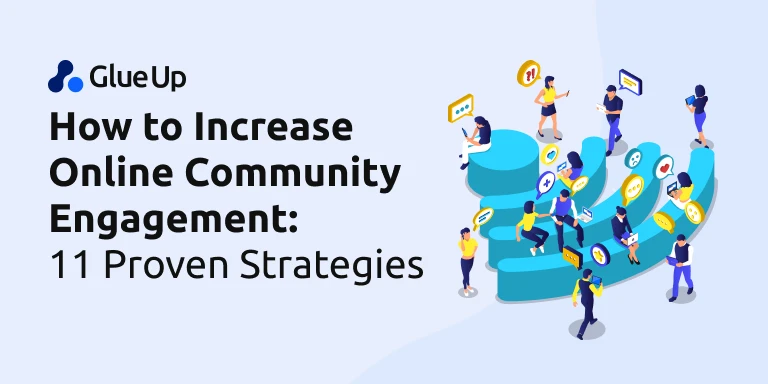
Hosting a virtual event can be an excellent way to engage your online community.
Associations, nonprofits, chambers of commerce, and more throw these virtual get-togethers to give value to their carefully cultivated online communities. When you engage them, you ensure they remain committed members of your organization.
In this guide, you'll learn everything you need to know about managing virtual events for online communities and how to maximize online engagement.
Preparation for Virtual Events
Event planning can involve many moving parts, and the same is true for virtual events. Therefore, it's essential that you prepare before going live.
Here are some essential tips you can leverage for the same:
Identify the Purpose and Goals of the Event

What’s the end goal of your virtual event? Are you trying to increase awareness of your cause? Or maybe you want to create networking opportunities?
Long before picking a date and sending out invitations, you should be clear on what your event hopes to accomplish.
With that said, it isn’t enough to set any old goal.
Your goal should be specific, measurable, attainable, relevant, and time-based, i.e., SMART. This will help you properly determine whether or not your strategy is on track to achieving those goals in the first place.
So, an example of a SMART goal for a virtual event would be to “attract 5% more sponsorship opportunities from attendees by the next quarter.”
Select the Right Platform for the Event
Once you've decided on your event's SMART goal, the next step is choosing a virtual event platform to power it.
The right event management platform not only allows you to host successful events, but they take care of the entire event lifecycle from ideation to follow-up. You can create custom registration forms, activate supported payment options, and add speakers and the agenda - all in just a few clicks.
Set the Agenda and Schedule
So, you're clear on your event's goal and you've chosen a platform to host it on—now would be a good time to set the event's schedule and agenda.
If you didn’t already know, your event isn't going to happen in one go; it'd be impossible to maintain attendee engagement otherwise. The smart thing to do would be to break it up into sections. That way, you ensure your virtual attendees don’t experience fatigue.
You can kill two birds with one stone by setting your event's agenda and schedule. Setting an agenda and schedule not only breaks up your event into manageable chunks, but it also tells your attendees what to expect (and when) during the event.
The above are but a few preparatory steps that come to mind. How thoroughly you’d need to prepare will depend on factors like the type of event you're planning, its size and scale, and so on.
Running the Virtual Event
With your preparations out of the way, it's time for the main event (pun intended). Below, we discuss the main tasks involved in running a virtual event:
Pre-Event Preparation
So, you’ve set a goal, schedule, and agenda for your event, and chosen a platform: how are you going to fill virtual seats? Promotion, that’s how. This is where a landing page can help you.
An advanced event management software like Glue Up features tools for creating and sharing landing pages for your event.
Your landing page should provide information about the event, i.e., its date and time, the theme, host, guest speakers, and so on. Also, it should provide a means for interested people to register. Feel free to create a digital business card that you can share with the attendees with the invite.

OBN-UK’s landing page (powered by Glue Up), for instance, shows what information to include on their virtual event. You even have pictures of the speakers. It has a “Register” button that transports interested visitors to a page where they can enter their details.
But how do you get traffic to your landing page? If you maintain accounts on social media platforms, work them into your event strategy. Social media can be an effective marketing channel for this. Send emails to your subscribers, too.
Technical Preparation
Before launch, you need to nip technical issues in the bud. An excellent place to start is to check the audio and video quality of the platform you are using for hosting your virtual event. Sound issues tend to put a damper on in-person events. With virtual meetings, a combination of poor audio and video quality could prove downright embarrassing.
You can prevent such issues by making pre-recorded videos and assessing their quality. If you are not happy with the quality or anticipate problems during your event, consider using an alternate platform.
Moderation and Facilitation
Unfortunately, as an event organizer, you should prepare for unruly attendees. In-person experiences have security guards who can escort miscreants off premises. You don’t have that. You have to rely on moderators to help maintain order, increasing your chances of virtual event success.
As mentioned above, most of your attendees will be on their best behavior. However, as this Verbal Venting in the Social Web study reveals, some people may be less inhibited when protected by the cloak of internet anonymity.
Engaging Participants and Encouraging Interaction
As already mentioned, droning on for hours on end is an excellent way to lose your audience's interest.
To mix things up, consider incorporating activities that involve your event's attendees’ participation into your event. Event planners or hosts can also work Question and Answer sessions into the event to drive engagement among audience members.
You can encourage your audience members to converse among themselves during event lulls (applicable to multi-day virtual events).
If you want to break the ice, you can arrange a speed networking session before the main event. This allows your attendees to engage in short 1:1 calls where they can exchange ideas, and build meaningful relationships.
Post-Event Follow-Up
Planning for what happens after your event is equally as important as your pre-event preparations. After all, you want to maintain the relationship and pave the way for your future professional and social events.
Post-event, it’s imperative that you follow up with attendees. However, don’t neglect audience members who expressed interest during the event-registration stage but failed to make the session attendance roster.
An excellent way to follow up with both categories of people is to point them toward where they can access a recording of the event. First, the video recording serves as a preview of what to expect, encouraging non-attendees to join future events. Second, the recording will serve as a reminder for attendees of what they learned during the entire session.
Also, you can share your digital business card post-event for customers to interact with. This way, it is easier for you to track how many attendees interacted with it.
Best Practices for Virtual Events
Virtual event organizers who want to provide amazing attendee experiences can take a leaf out of the playbook used to run in-person conferences. Here are some best practices you can adopt in managing virtual events for online communities. These can help make your virtual event a success:
1. Create a Sense of Community
You should inspire a sense of tight-knit community in your event’s attendees from the moment you go live. As is discussed in more detail below, virtual events don’t have a major advantage in-person events do, i.e., face-to-face meeting opportunities.
Therefore, you’ll need to work extra hard to make your attendees feel like they’ll have something to gain from gathering together virtually.
The best way to create a sense of community is by utilizing all the tools your chosen community platform leaves at your disposal.
For example, when attendees register for your event, you can give them access to extra content related to the event or discussion forum that aids their digital learning during and after the event. Glue Up’s community management software also features an app for your members where they can connect before, during, and after all your events.
Providing access to the above-mentioned resources ensures your event’s attendees continue to see the value in your event long after it’s over. You can use a content generator to speed up the content creation process.
2. Keep Members Engaged and Active
Engagement is a vital element to successful event execution. Therefore, try keeping your members involved during the entire event through:
- Live chat
- Breakout rooms
- Gamification
Live chat features can act as a substitute for face-to-face meetings and help your attendees network via text. Breakout rooms are excellent for post-event training programs and specialized learning.
Additionally, gamification features (like awards, badges, and levels) encourage community members to contribute positively to your online community.
Please note that most of the above features will only prove useful if you’ve built a virtual community alongside your event.
3. Providing Opportunities for Networking and Collaboration
One of the main draws of attending an in-person event is the opportunity to network and collaborate with fellow attendees.
For example, at an in-person event, an attendee can have face-to-face meetings with like-minded people during lulls. Their tête-à-têtes can result in the forging of good connections.
Experiencing an event from behind a computer screen may seem to provide fewer opportunities for networking and collaboration but nothing could be further from the truth.
You can encourage your event’s attendees to join your virtual community. Virtual space has the advantage of being able to accommodate a virtually limitless number of community members.
So, even though attendees may not get to network during the event, a virtual community presents an opportunity for them to gather with like-minded people. Better yet, being a community member lets them forge long-term virtual connections that can translate into real-world partnerships.
A robust community management platform like GlueUp provides the tools needed to build virtual communities. Additionally, they are completely private, so that your members feel secure, and are customized to reflect your brand.
4. Incorporate Interactive Elements

Try incorporating interactive elements into your virtual event. They keep your audience engaged. For example, when an audience member makes a comment, event speakers can respond to the commenter and address them on a first-name basis.
Also, these features allow for quick Q&A sessions. During a short pause, your event speaker can solicit questions from audience members and answer them quickly before moving on to another section of the event.
When audience members receive responses to their contributions, it drives engagement. They feel like they’re active participants in a two-way conversation.
5. Encourage Feedback and Continuous Improvement
Finally, you should adopt an attitude of continuous improvement after every event. Once your virtual event wraps up, hindsight should illuminate areas you could have handled better. In addition, the data your virtual conferencing tool gathered will prove insightful for filling future events.
However, the best place to gather feedback about what your event got right and wrong is from the people who attended it.
Gathering feedback from your event’s attendees shouldn’t be difficult if you built a virtual community alongside your event. Some of your options include:
- Start a discussion thread and solicit feedback directly from attendees.
- Encourage one of your super users to start a thread around your most recent event (so attendees provide unfiltered responses).
- Create a survey using the Glue Up platform and share it with your community.
It’s advisable you place equal emphasis on the negative feedback as you would the positive. You want to avoid repeating the same mistakes as much as you’d want to double down on the aspects your attendees found pleasing.
While you can gather the feedback personally, consider outsourcing the work to a small team of virtual assistants.
6. Use an All-In-One Software for Event and Community Management

If you have two separate software for events and community, you are going to spend a lot more time managing them than focusing on fostering a satisfying experience for your members.
A simpler approach is to use a consolidated platform to manage all community workflows in one place.
Glue Up is one such software that allows you to build your private community while at the same time hosting successful events. Additionally, the powerful CRM acts as a main line of communication which gives you a birds-eye view of your member engagement through all their interactions with you - including events.
Interested in learning more about Glue Up? Get a free demo today and start building a successful online community for members!
Author’s Bio
Claron is a brand nut. He has an unceasing curiosity about what brands do to break through the clutter to stay relevant to their audience. He also loves to explore how simple tech (QR Codes lately) can be used to improve customer experiences and consequently, scale up brands.




